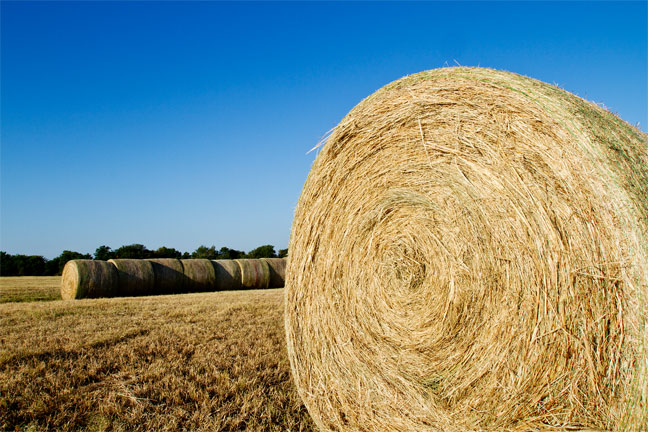
Agricultural News
Consider These Concepts for Proper Storage Management to Limit Your Hay Loss this Summer
Tue, 23 May 2017 11:22:54 CDT
 Dr. Glenn Selk, Oklahoma State University Emeritus Extension Animal Scientist, offers herd health advice as part of the weekly series known as the "Cow Calf Corner" published electronically by Dr. Peel and Dr. Glenn Selk. Today, Dr. Selk offers producers advice on how to store round hay bales this spring and summer during cutting season to minimize loss.
Dr. Glenn Selk, Oklahoma State University Emeritus Extension Animal Scientist, offers herd health advice as part of the weekly series known as the "Cow Calf Corner" published electronically by Dr. Peel and Dr. Glenn Selk. Today, Dr. Selk offers producers advice on how to store round hay bales this spring and summer during cutting season to minimize loss.
"As hay is being cut and put in large round bales, it is always important to reduce hay storage losses. University of Tennessee animal scientists conducted a trial to compare different methods of storing large round bales of grass hay. The hay was cut and baled in June in Moore County, Tennessee. The bales were weighed at the time of harvest and storage. Then they were weighed again the following January at the time of winter feeding.
"Average spring, summer, and fall rainfall in Tennessee will generally be greater than that experienced in much of Oklahoma. However the rankings in storage loss between the storage methods will be present in Oklahoma as well.
"An Oklahoma State University fact sheet by Dr. Ray Huhnke summarizes differences in storage loss that can be expected in an Oklahoma ranch setting. Source: Oklahoma Cooperative Extension Fact Sheet BAE-1716 "Round Bale Hay Storage."
"Obviously, it would be ideal to store the hay inside, but that will not often be practical. The next best option is when the hay is stored on something that gets the hay off of the ground under a rain shedding cover.
"Other important storage concepts can be used as the hay is being harvested this spring and summer.
"The storage site is an important consideration in reducing bale losses. Select a site that is not shaded and is open to breezes to enhance drying conditions. The site should also be well-drained to minimize moisture absorption into the underside of the bales. As much as 12 inches of the bottom of a bale can be lost through moisture absorption resulting from the wicking action. Ground contact can account for over half of the total dry matter losses. Where practical, keep bales off the ground using low cost, surplus materials such as discarded pallets, racks, fence posts, railroad ties, and used tires. Another alternative is to use a layer of crushed rock about six inches deep to ensure good drainage within and around the storage site.
"Bales should be stored in rows, buffed end-to-end, and oriented in a north/south direction. The combination of the north/south orientation and at least three feet between rows will provide for good sunlight penetration and air flow, which will allow the area to dry faster after a rain. Vegetation between rows should be mowed. Research has shown that orientation is a minor consideration if the bales are used before early spring because the losses are relatively small until that time. If stored into the summer, bales oriented in an east-west direction can experience severe deterioration on the north-facing surface.
"The source of these and other ideas about hay storage can be found in Dr. Ray Huhnke's Oklahoma Cooperative Extension Fact Sheet "Round Bale Storage" BAE-1716."
WebReadyTM Powered by WireReady® NSI
Top Agricultural News
More Headlines...





